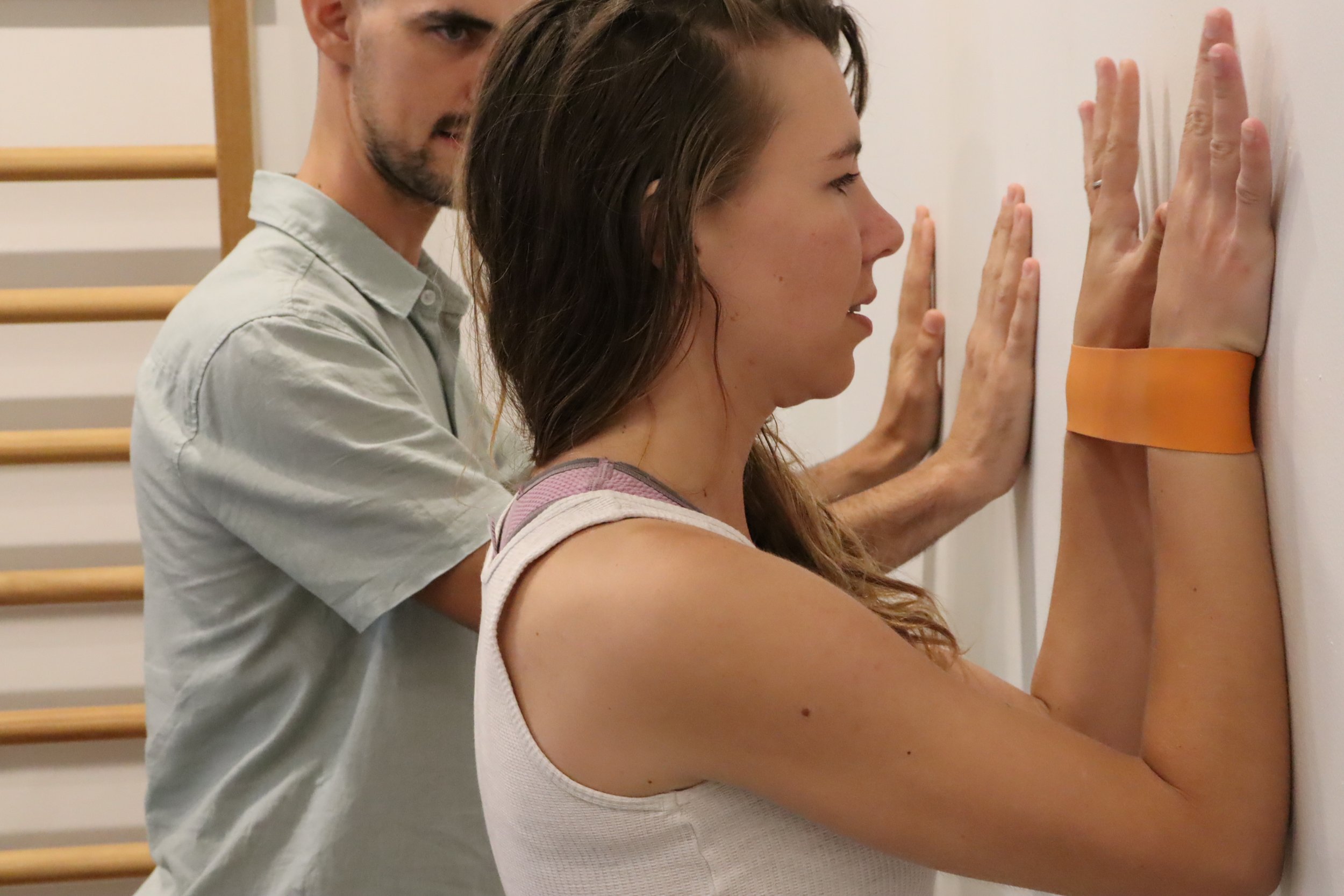Pain from injury or illness and chronic pain can be an issue for many people. Osteopathy is very effective for pain management in a variety of ways. Whether in the treatment room or outside in the real world, osteopaths can help you get back to feeling your best self soon.
Pain Management
Hands-on treatment, exercise, education and connecting people with other services are some of the many ways osteopaths help manage pain.
There are two broad categories of pain, acute pain and chronic pain. Acute pain is often the result of a recent event or condition and typically resolves quickly, this may be due to an injury, surgery or reoccurring condition. Chronic pain is pain lasting longer than 3 months and is typically due to an unresolved injury or other underlying condition.
The body has many ways to deal with acute pain including through neuromodulators (signals from the brain and spinal cord) and the healing process. After some time, adaptation occurs and these mechanisms no longer work the same way. The nervous system can enter a protective state where even minor stimulus causes increased levels of pain. This change in neuromodulation is part of what can make chronic pain so difficult for people to manage alone.
Osteopathic intervention can reduce the potency of acute pain and disrupt the signals that propagate into chronic pain. Osteopathy can also resolve some of the mechanisms of chronic pain by allowing the body and brain to experience normal function again. Once these signals are adjusted, the person can complement the healing process with other interventions, such as exercise and good sleep, to help solidify the changes leading to a more appropriate pain response to the stimulus.
Regardless of if you have chronic or acute pain, osteopaths work very closely with their clients to tailor an individualised treatment plan. This specific plan can involve one or more treatment sessions with the osteopath and additional strategies the client can take away to improve their function, mobility, and reduce pain.
Manual therapy is a great tool for people to get on top of their pain. It can guide their body toward the optimal way to function, and with better function comes a greater ability for the body to heal and therefore decrease pain. It is effective for many conditions, ranging from; muscle, tendon and joint pain, to abdominal, pelvic and gut pain, to headaches, whiplash and migraines, to pregnancy or birth-related pain, and even for pain as a result of other chronic conditions such as diabetes, neurological disorders, asthma, arthritis, anxiety and depression, and many more.
Most people may benefit from regular osteopathic treatments. Often, a few appointments close together can help the client get on top of their pain, and usually, individuals can manage long-term with the other supports and strategies that the osteopath and client have put in place together. Occasional appointments spread further apart may be useful to track the progression of their condition and address any new or evolving issues as they arise. For more complex or chronic types of pain, more frequent or regular sessions could be recommended as other strategies alone may not be enough for the person to manage their pain long-term.
Some of the strategies used to help alleviate pain include targeted exercises, behaviour changes, education about their condition, education about the mechanisms of pain and changes that occur with chronic pain, stress management strategies, and lifestyle interventions such as sleep, dietary changes, or work and exercise ergonomics.
Education about pain or painful conditions is a big part of what osteopaths do for their clients. By empowering clients with knowledge and strategies, they can better manage their pain and not be reliant on the osteopath for frequent hands-on treatment.
Osteopaths can also link clients with other healthcare services to further equipped them with the support and knowledge they need to best manage their pain. Other healthcare providers can complement and work with osteopathic services such as a psychologist, naturopath, massage therapist, dietitian, podiatrist, diabetes educator, physiotherapist, GP and other specialists like an orthopaedic surgeon or rheumatologist.




